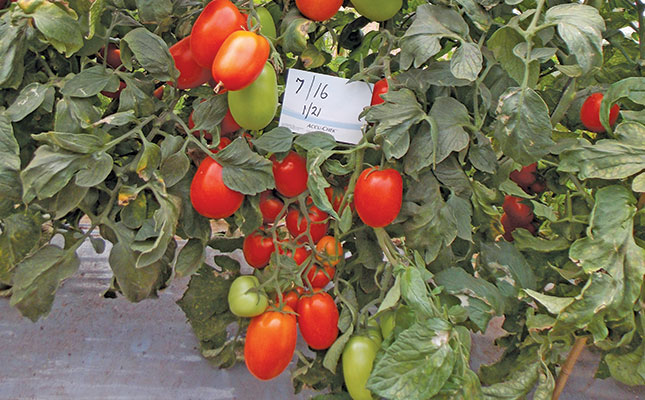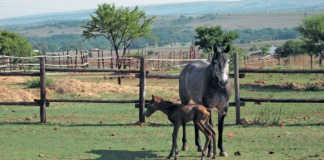
Photo: Bill Kerr
South Africa has areas that are sufficiently warm in winter for growing tomatoes. Equally, in some areas, winter temperatures drop too low for tomato production.
Many people think that growing tomatoes under plastic eliminates the problem of frost. But nothing could be further from the truth.
Only if you heat the tunnel can you be productive in winter. The problem, however, is that the cost of heating will be higher than the cost of transporting tomatoes from a warm-winter area.
This doesn’t necessarily mean you cannot produce tomatoes in tunnels. But it does mean you need to have a market that pays a fixed price higher than the average market price and that your outlet will contract for a fixed volume. This will make tunnel-growing more viable for you.
Specific variety
To secure such a contract, you will have to present the outlet with a specific variety or type of tomato that is not readily available on the open market. Various cherry tomatoes or grape tomatoes spring to mind.
You may also be able to find a supermarket willing to pay a little extra for a variety with a better eating quality. South Africa has notoriously tasteless tomatoes on account of the ripening inhibitor (RIn) gene used by many producers to extend shelf life.
Growing tomatoes in tunnels can be a challenge: you need to do your homework on the economics of tunnel farming. Apart from the initial outlay of erecting the tunnels, you will have to plan for the replacement of the plastic every few years. As this is linked to the oil price, the costs can be considerable.
Powdery mildew
One of the many advantages of a tunnel is that it protects the crop from rain and hail. This also means protection from diseases that are triggered by rain.
However, there are also diseases that are worse in tunnels. Amongst them are two species of powdery mildew that don’t require free water on the leaves to develop, only humidity.
They are Leveillula taurica and Oidium neolycopersici. The latter produces a conspicuous white powdery mildew on the leaves.
These diseases are more likely to develop in plastic tunnels than outdoors. The good news is that varieties resistant to these diseases are now becoming available. Mildew, then, need not be the barrier to tunnel-growing that it has been in the past.
In a tunnel, you can plant in the soil or in plastic bags with a suitable substrate and grow hydroponically.
If you can get your soil right, you can plant directly into the soil. I have been growing in the same soil every year for 20 years without fumigation, having built up my humus level to above 5%.
Bill Kerr is a vegetable specialist and breeder.











